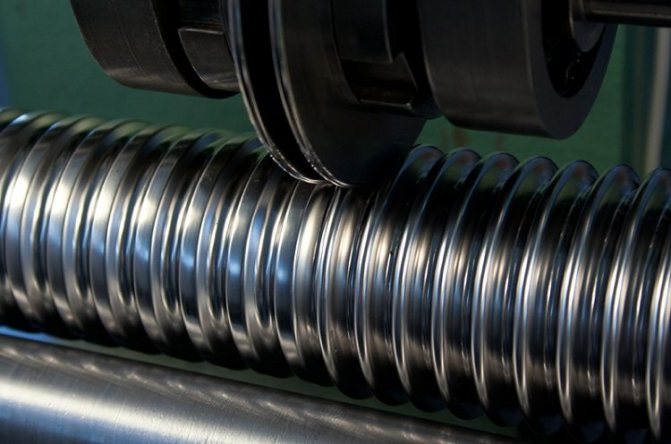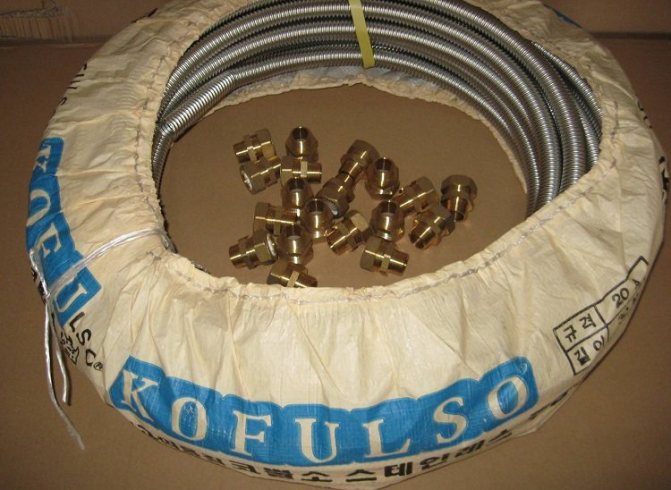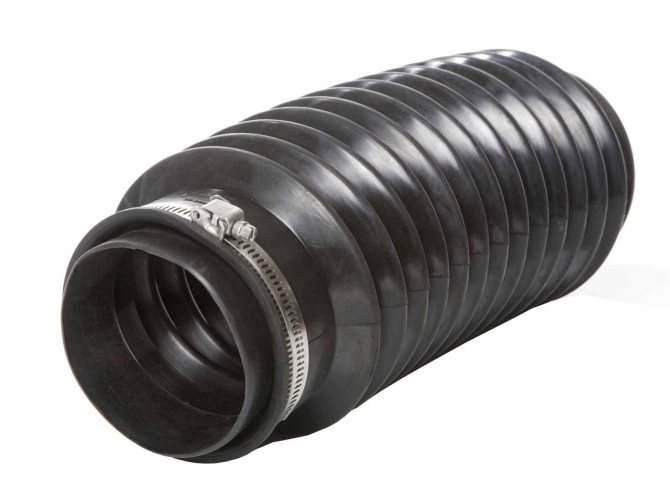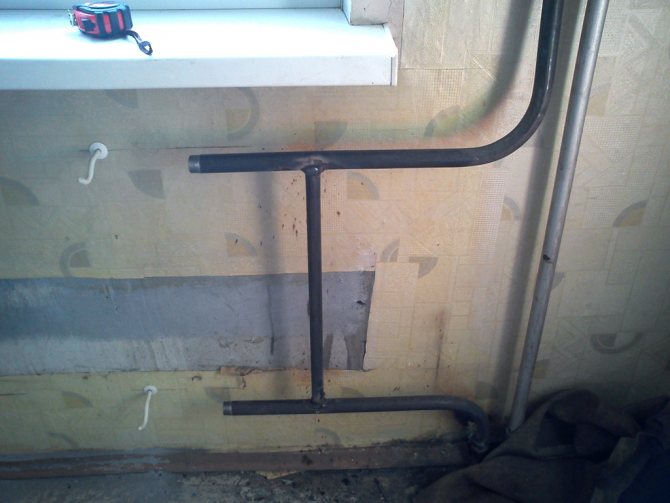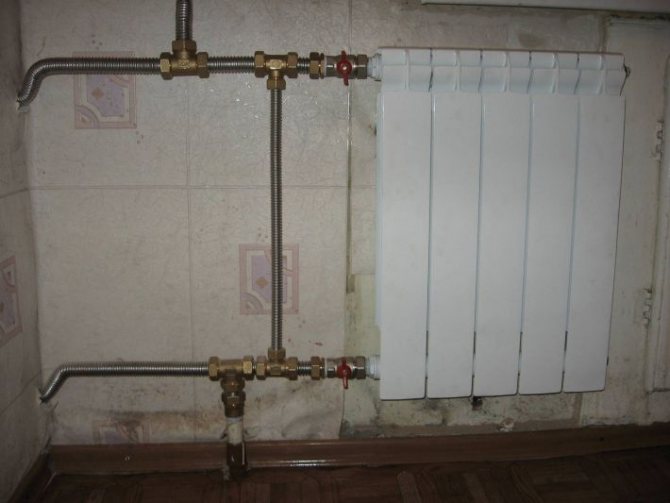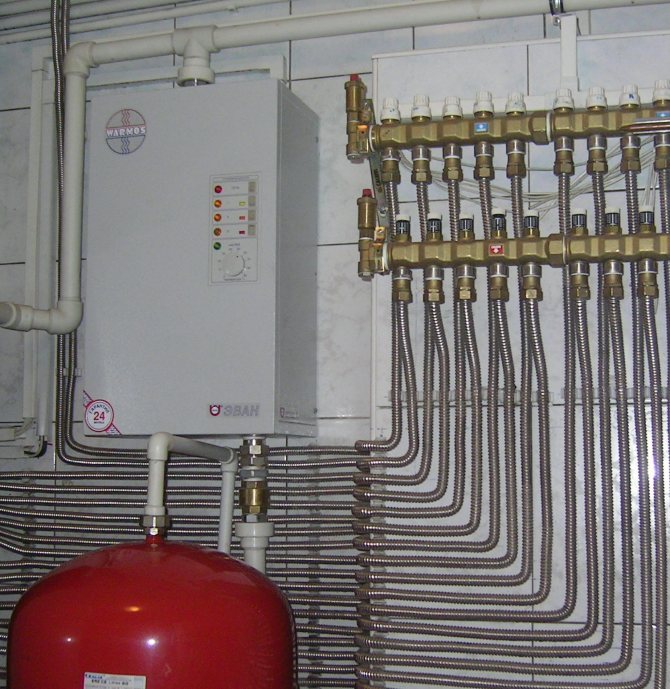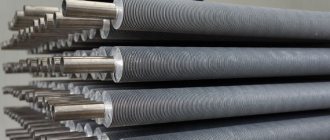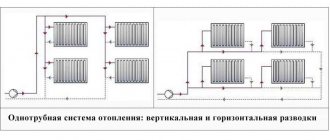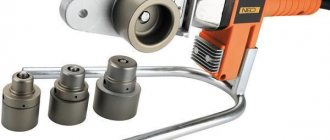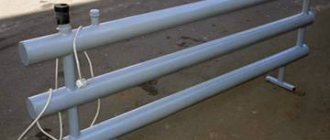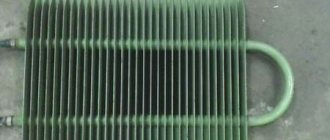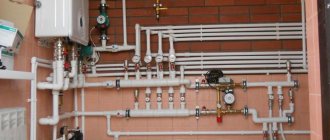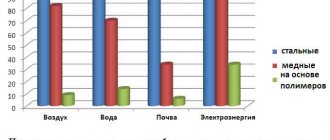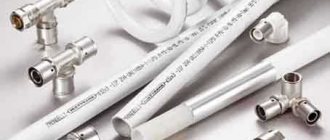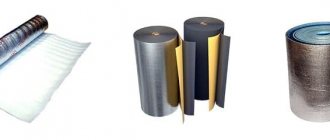
Heating is the most important engineering section, without which comfortable living in a cottage is impossible. Heating a private house must be done correctly, and this is a great art. It is necessary to have knowledge of many subtleties and nuances in order not to make mistakes. Such knowledge can only be provided by a complex of theory and practical experience.
If you have questions about the organization of the correct heating of a private house and you need an engineer's consultation, then call or write to us. Specialists will be happy to answer questions and clarify the nuances that interest you.
Heating system selection
Choosing a heating system for a cottage is not an easy task. There are many pros and cons to be foreseen. In this case, it is necessary to consider and analyze the following parameters:
- Fuel availability
- Reliability - the technologies used must be time-tested
- The cost of both the heating system itself and its operation and maintenance
- The prevalence of technologies on which the heating of the house is built, and the availability of specialists for regular maintenance
- Maintainability
- Appearance and compatibility with design
- Individual wishes and their feasibility without sacrificing the overall quality of the heating system
Further, we tried to reveal the main nuances, the knowledge of which will help you make an informed choice. If you have any questions, you can always contact us for advice.
Types of heating in a private house
All heating systems can be classified according to the following parameters:
By type of fuel
Depending on the fuel consumed, heating systems installed in private country houses can be of the following types:
- Gas (main or liquefied gas)
- Electrical
- Solid fuel (firewood, sawdust, pellets, coal, etc.)
- Liquid fuel (diesel fuel, waste oil, etc.)
- Geothermal - systems based on renewable (alternative) energy sources
They all have their own advantages and disadvantages. Natural gas is the optimal fuel for Moscow and the Moscow Region. If the country house has the ability to connect to the gas main, then you can choose this option without hesitation.
By type of coolant
Based on the type of coolant used in the heating circuit, the heating of the house can be of the following classes:
- Water
- Air
- Steam
- Combined - combining several types of coolant
In Moscow and the Moscow Region, the most common type of heating is the use of water heating systems. We will dwell on them in more detail.
Calculation of the volume of the coolant
Residents of apartment buildings do not need to know about the volume of the coolant in the system, but in private houses this knowledge is very important:
- Firstly, the expansion tank is selected depending on the volume of the heating system. Exceeding the required dimensions does not threaten anything special, but too small a tank will lead to constant overflow of the coolant, and it will have to be topped up regularly.
- Secondly, in country houses it is very difficult to maintain a stable temperature regime for heating, and when using solid fuel boilers, it is impossible. It is impossible to leave the heating system in a filled state during frost, therefore the only solution to the problem will be non-freezing coolants.Since their cost directly depends on the volume of the coolant, then the volume of the system needs to be known.
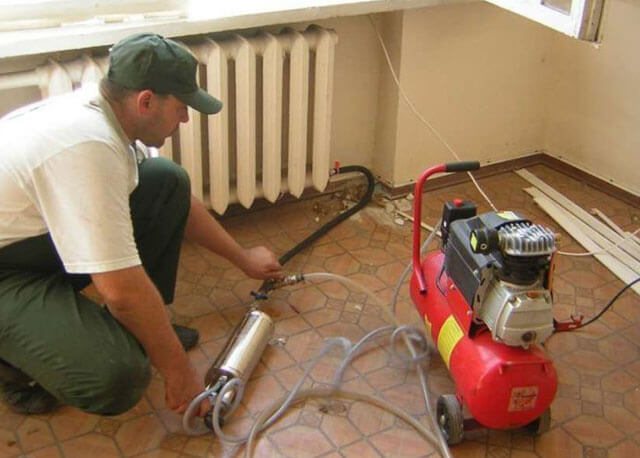

There are two ways to determine the volume of the heating system without using complex calculation methods and regulatory documents:
- The first method is possible if, before filling the closed-type heating system, a connection to the water supply is established through a jumper. A completely drained circuit (without coolant and air) is filled with water with taps and valves closed. The amount of water spent on filling the heating system can be determined by the meter installed on the water supply system.
- The second method is to flush the system through the appropriate valve, and substitute any container, the volume of which is known, under the pouring water. With such a measurement of the volume of the coolant, it is necessary to open the air vents on each heating device so that water does not remain in them and does not lead to measurement errors.
Calculation of the home heating system
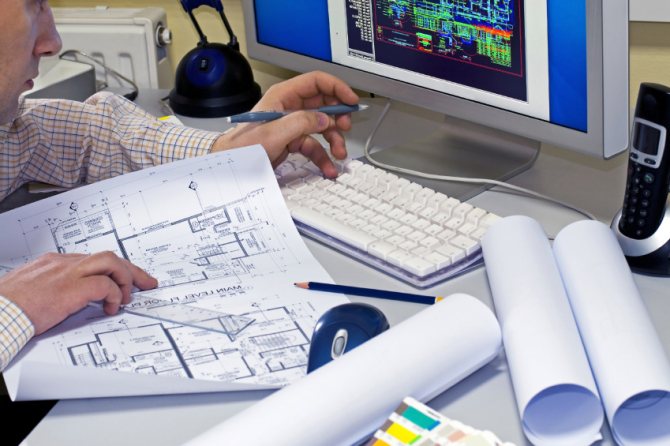

In order to be exactly sure that the heating system of your cottage will function correctly, it is necessary to carry out the design. But if the cottage is small, then the design can be omitted. In this case, it is necessary to carry out an engineering calculation of heat losses.
The essence of the calculation is reduced to determining the required thermal power. It characterizes the amount of heat that must be transferred to each heated room in the cottage. The required heat output corresponds to the heat loss. Heat loss - the amount of heat that leaves a country house through its enclosing structures (thermal circuit).
Calculation of heat losses is performed for each individual room and cottage as a whole. On its basis, a heating boiler is selected, and radiators or other heating devices are selected.
There is a simplified technique that allows you to calculate the approximate thermal power required for each room in a country house. To do this, the area of the room is multiplied by 100-130 W (depending on how many external walls there are). However, this method gives approximate results that do not take into account a number of factors.
There are special formulas for precise calculation. First, the thermal resistance R is determined (in m2 * C / W). It is equal to the ratio of the thickness of the protective structures (in meters) to their thermal conductivity. This is a tabular value.
| Material | Thickness | R |
| Brick | 0.8 m | 0,6 |
| 0.7 m | 0,5 | |
| 0.6 m | 0,4 | |
| 0.3 m | 0,2 | |
| Log | 0.3 m | 0,6 |
| 0.2 m | 0,5 | |
| Beams | 0.2 m | 0,8 |
| 0.1 m | 0,4 | |
| Insulated frame | 0.2 m | 0,7 |
| Foam concrete | 0.3 m | 0,7 |
| 0.2 m | 0,5 | |
| Plaster | 0,03 | 0,04 |
| Ceiling or attic floor | 1,4 | |
| Wooden floor | 1,9 | |
| Wooden double door | 0,2 | |
After that, the formula is applied to calculate the amount of heat loss (in watts) that occur through the heat circuit:
Q = S * (Tvn-Tnar) / R
S - area of the heated room,
Tvn - required room temperature,
Tнр is the minimum outdoor temperature during the coldest period of the year.
Heat energy is also consumed through ventilation (both natural and forced). Its amount is calculated using the following formula:
Q = c * m * (Tvn-Tnar)
m is the mass of air in rooms (the product of the total volume of rooms and the density of air, c is its heat capacity, which is 0.28 W / kg * C).
To calculate the required total heat output, it is necessary to add the amount of heat loss through the walls, floor, roof and through the ventilation. The resulting amount is multiplied by a factor of 1.3.
In addition to the thermal calculation, a hydraulic calculation can also be performed. It serves as the basis for the selection of pipe diameters and parameters of pumping groups. This calculation is part of the heating project.
Heating medium circulation
Depending on the method of moving the coolant through the pipes, the heating of the house can be designed in two ways:
Option with forced circulation of the coolant


For a heating scheme of a private house with forced circulation, a circulation pump must be installed in the heating system. It provides the movement of the heated liquid through the pipes to the radiators. In this case, no slope of the lines is required. When radiators are installed in the system, it is necessary to install Mayevsky taps on them to displace air locks. The cooled heat carrier is fed back to the boiler room through the return loop.
The advantages of the option with forced movement of the coolant are:
- High speed of movement of the coolant. As a result, the liquid in the return loop practically does not cool down. This allows you to optimize the use of fuel or electricity (depending on the type of boiler)
- The ability to adjust the temperature regime of each of the heating devices
- Minimization of the internal cross-section of pipes without reducing the resistance of the medium in the lines
Version with natural circulation of the heating medium
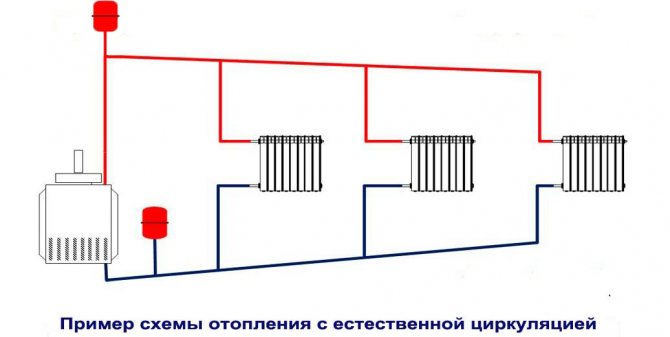

Other used names for this system, built on the basis of this option, are gravitational, convective. Heating a private house with natural circulation of the coolant - an economical option
The principle of operation is as follows. When heated, the density of the water decreases. Therefore, the hot water in the supply circuit is forced upward by the heavier chilled water in the return circuit.
To prevent water hammer due to an increase in volume (and, as a result, the pressure of the coolant in the system), an expansion tank is installed in the upper part of the system. As a result, more heated layers enter the radiators, and the cooled coolant enters the boiler along the return circuit.
In addition to the convection principle, the gravitational principle also works in this heating scheme for a private cottage. To do this, a slight slope is made in the incoming circuit from the riser to the heating devices, enhancing the movement of the coolant by gravity. Accordingly, the return circuit provides for a slope towards the boiler.
This method has few advantages:
- Low price
- No circulation pump needed, which needs power supply. This allows a heating system independent of electricity (provided that a suitable boiler is used)
The main disadvantages of such a heating system are that the circuit with natural circulation of the coolant has a low level of comfort and reliability.
Filling and starting a closed heating system
A forced circulation heating system has a couple of key features:
- When operating a system equipped with a heating boiler and a circulation pump, a pressure exceeding atmospheric pressure always occurs.
- Before putting the system into operation, the system undergoes pressure testing, at which the pressure value exceeds the working one by one and a half times. Crimping is especially important for underfloor heating that is laid in a screed. It is important that the underfloor heating is crimped by a specialist.
Before pouring the coolant into a closed heating system, you need to take these factors into account and think over the technology for carrying out the work.
In buildings with central water supply, the problem with pressure testing is solved in a very simple way. For this, the heating is connected to the water supply by means of a bridge and is filled with constant monitoring of the pressure on the manometer. When the system is pressurized and checked for leaks, excess water is drained through a valve or air valve.
It is a completely different matter if water is poured into the heating circuit manually, or if various versions of antifreeze compositions are used as a heat carrier. Before pouring the coolant into a closed heating system, in most cases it is enough to take a pump that allows you to fill in the coolant and pressurize the circuit. The pump is connected via a valve that closes when the required pressure is reached.
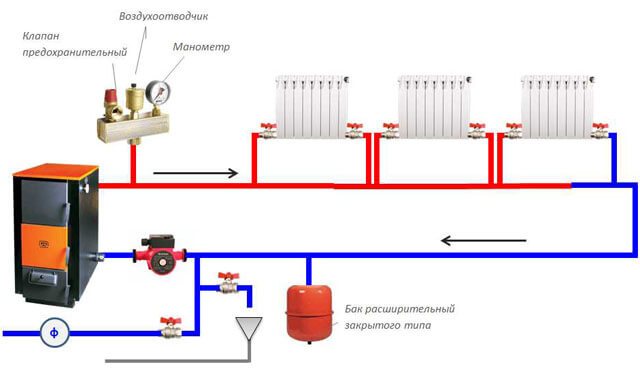

However, filling the system can be done without a pump. To pump 1.5 atmospheres in the system, you can take advantage of the fact that this value corresponds to 15 meters of water column. Given this knowledge, before filling a closed heating system with a coolant, you can solve the problem in the simplest way - connect a reinforced hose to the dump valve, raise it to a height of 15 meters and fill it with water.
Replacing the coolant in the heating system of a country house can be done using an expansion tank. This element is designed to receive excess liquid during thermal expansion. The diaphragm tank is a structure in which there are two cavities separated by a movable diaphragm. One part of the tank receives the coolant, and the second contains air. Also, any tank is equipped with a nipple, with which you can raise or lower the air pressure.
Filling the heating system with water using a tank is carried out as follows:
- First, all air is completely removed from the tank, for which you simply need to unscrew the nipple. The pressure in standard tanks is 1.5 atmospheres.
- Water is poured into the system. It is not required to completely fill the tank - the air volume should be about 1/10 of the total volume of the coolant in the system.
- Air is pumped into the tank with any hand pump. The pressure is monitored continuously by a pressure gauge.
Methods for laying heating pipelines
In the heating system of a cottage, pipes can be laid in two ways:
Open way of laying
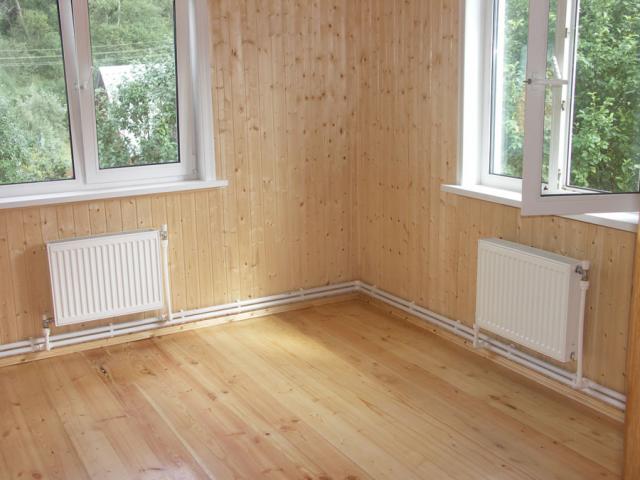

In this case, they are laid along the walls, parallel to the skirting boards. Throughout their entire length, they are in sight.
The advantages of this method:
- Access to pipes without dismantling structures
- Low heat loss
- Simple heating installation
Main disadvantages:
- The pipeline often spoils the appearance of the premises, does not fit into the design
- In order to avoid sagging and deformation, not all types of pipes can be used.
Hidden way of laying
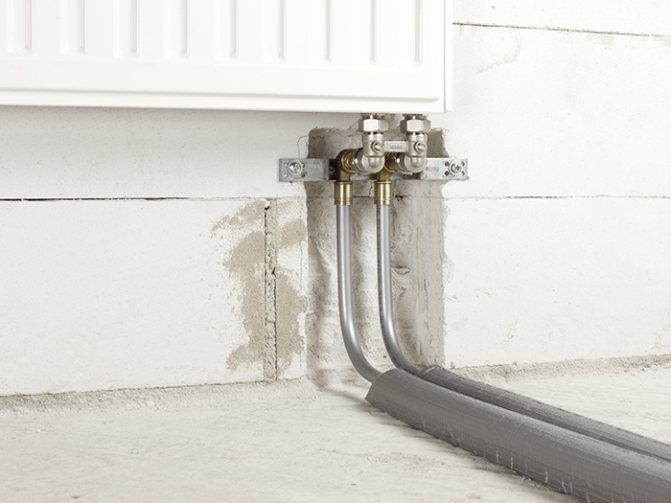

The pipe is walled up in the wall, in the floor or decorated with external material.
The main advantages of hidden pipelines:
- The ability to hide the highways so that they do not spoil the interior
- The ability to use pipes made of modern materials
Among the disadvantages are:
- Access to pipes is difficult if necessary for their possible repair, replacement of individual sections, elimination of emergency situations
- Due to the high heat losses of the line, it is necessary to insulate
When routing in a covert manner, only reliable and proven pipes should be used. The best option is cross-linked polyethylene pipes.
Filling the coolant with this method must be performed only after a hydraulic test of the heating system.
Basic rules for the installation of heating pipelines
It must be remembered that the routing of pipelines is carried out after all the heating devices are installed in the selected places. The optimal assembly sequence is as follows:
Marking the passage of heating pipes
It is better to do this in advance, before installation. In the process of marking, as a rule, installation difficulties are revealed, which are caused by the architectural and construction features of the cottage. Knowing them, you can prepare in advance for their solution or change the paths of the routes.
Most often, the marks of the passage of highways are applied to the walls. In some cases, they can be performed on the floor, but in this case they can be overwritten by people passing through the premises.
Making the necessary technological holes and strobes
It is also better to complete this stage in advance on the entire front of the work. The locations of the necessary holes and the passage of the strobes are determined during the marking.
The grooves can be cut with a chasing cutter. If this tool is not there, then they are first marked with a grinder, and then hollowed out with a perforator.
Thermal insulation of pipes
This must be done if you are routing hidden. The main purpose of insulation is to prevent heat loss and increase the efficiency of the system as a whole.
Insulation is carried out with a special heat insulator, which is made for the diameter of the pipes. It is put on the pipes by hand, at the installation site. The most effective and durable is a rubber-based heat insulator. But its price is also higher in comparison with analogues.
Laying and fixing pipes on building structures
Pipes must be secured not only with open, but also with hidden wiring of the heating system of a private cottage.
With open wiring, the pipes are attached to the walls with special clips. Self-tapping screws or nails are used as fasteners (depending on the material of the walls).
If hidden wiring is performed, then the pipes are fixed to the wall in grooves or to the floor with special clamps or punched tape. If the line consists of several pipes, for example, coming from the collector, then they must be fastened into loops. The fasteners that are used in this case are the same.
Connection to heating devices
Depending on the design of the radiator, pipes can be connected to it either directly or by means of a multiflex. In any case, for connection, the connecting fittings are used, which are supplied in the kit.
With collector wiring in the heating system of a private house, the connection is made not only to heating devices, but also to floor collectors. As in the previous case, the connection is carried out with complete connecting fittings.
Hydraulic and pneumatic tests
This is a necessary part of the installation work. During their implementation, the system is filled with water or air. Then, with the help of a special pump or compressor, an excess pressure is created in it (~ 1.5 workers when tested with water). An hour later, the results are taken - there should be no pressure drop.
If during the test there is a drop in pressure in the system, then leaks are identified. Then work is done to eliminate the causes of the leak. After that, the hydraulic tests of the system are carried out again.
Sealing holes
Pouring the floor screed and sealing the grooves with hidden pipe laying should be performed only after successful hydraulic tests. These are general construction works. The sealing of the chase is usually done by hand, most often with plaster.
Advantages and disadvantages of corrugated steel pipes for heating
In addition to stainless steel, the corrugated pipe can be made of plastic or cast iron (products with external ribbing). Plastic corrugated pipes are not the best option as a pipeline for the passage of the coolant. In heating systems, they are more often used as additional protection for basic communications, for example, passing in a cement screed. Cast iron corrugated pipes withstand heat loads well, but gradually recede into the background due to their heavy weight and complexity of installation.
Therefore, the optimal choice among all types of corrugations will be flexible stainless steel pipes for heating. Their use has the following undeniable advantages:
- corrugated stainless steel pipe is very easy to bend, it does not require additional devices and materials. Bending of the pipe takes place without risk to the integrity of the walls, so the structure can be given almost any shape. Thanks to this property of the corrugation, it becomes possible to mount heating wiring with a minimum of bends and joints, which will significantly reduce its cost;
- stainless steel does not corrode, which means that the service life of such a system is several times longer than the service life of a pipeline made of ordinary, "black" steel. In addition, temperature and pressure drops are also not a problem for stainless steel corrugations for heating;
- ease of installation is a quality that often attracts adherents of corrugations for heating pipes. The connections are made using brass fittings with O-rings of various materials. When repairing certain sections of the pipeline, it will also not be difficult to replace a system element;
- when large-scale work is required, an almost unlimited pipe length will be a significant advantage. Sorting of stainless corrugations for heating is carried out in coils up to 50 m. This should be enough for the installation of any pipeline, but longer coils are also produced individually.
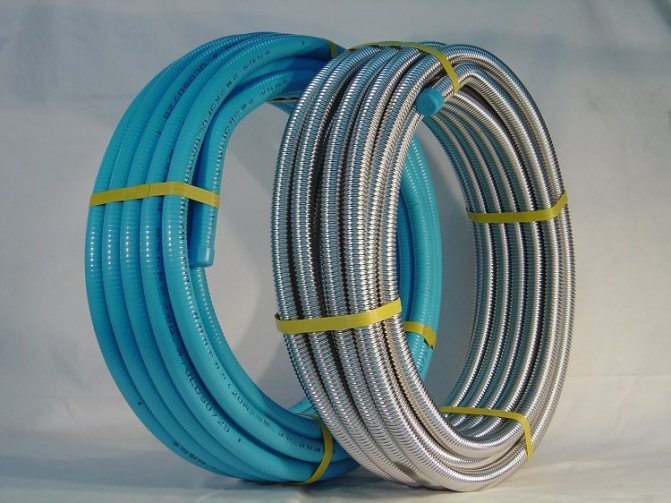

One of the most important advantages of corrugated pipes is their high flexibility, thanks to which you can save on fittings-bends.
Important! The maximum working pressure for stainless corrugations is 50Bar, the critical pressure is 250Bar. Normal working pressure for hot media is 15 bar. Corrugated pipes for heating withstand temperatures up to 110 degrees quite calmly, which is comparable to the properties of modern reinforced polypropylene structures.
Like any other product, stainless steel flexible pipes for heating systems also have some disadvantages. How weighty they are is up to the buyer to decide:
- small impact resistance. If a corrugated stainless steel pipeline for heating is installed in areas of a house or apartment where mechanical damage is potentially possible, it is recommended to use a protective casing;
- difficulty in leaving. It is somewhat more difficult to clean corrugated structures from dust than pipes with smooth walls. Hygienic procedures will have to be carried out with a brush, or even better, in advance, hide the corrugation in a protective box or screen;
- not the most aesthetic external component. When developing a model of a corrugated metal pipe for heating, manufacturers paid more attention to the functionality of the products than to their appearance. You can hardly call stainless steel pipes especially attractive, but for those who are not satisfied with this drawback, you can offer a lot of ways to hide the heating pipe.
Collector (beam, fan) heating circuit
With collector wiring, each heater is connected to the manifold with two lines - supply and return.
The main advantage of collector heating is that the circuit allows you to regulate the temperature of the coolant on each specific heating device or in each of the circuits in the water underfloor heating system.
When using heating pipelines made of modern materials (for example, cross-linked polyethylene or metal-plastic), there are no pipe joints between the collectors and the heating devices. This increases the reliability of the system. In this case, do not worry about the formation of leaks in the cavities. The collector circuit for heating a private house is carried out only in a hidden way. In cottages, this type of wiring is in demand more than others.
Requirements
The technical characteristics that heating pipes must have are influenced primarily by the conditions of their operation.Let's find out in what conditions the heating system will work.
Temperature
- For central heating systems, it is limited by the current SNiP... In no engineering system of a residential building, the temperature can exceed 95 C. In preschool institutions, the maximum temperature limit is even lower: not a single heating pipe or battery should be heated above 37 C.
Meanwhile, in the real world: under certain conditions, coolant can still get into the radiators bypassing the mixing chamber in the elevator unit. Yes, this is force majeure; nevertheless, the theoretical maximum that it is desirable to count on a paranoid-prone apartment owner is 140 C.
- In autonomous heating systems, the temperature usually does not exceed 75 - 80 degrees... In addition, heating pipes with a large length in the screed can perform the function of a water heated floor, for which 35 degrees is enough.
Pressure
- For hot water central heating, the norm during the heating season is an operating pressure of 4.5 - 5.5 kgf / cm2... However, when designing, it is better, again, to take into account force majeure circumstances: in case of a malfunction of the shut-off valves or low qualifications of the service personnel, a water hammer is possible, which briefly increases the pressure to 20-25 atmospheres.
- Pipelines in autonomous circuits experience much lower loads... For them, the norm is 1 - 1.5 kgf / cm2. The pressure is absolutely stable: in a closed system, a water hammer with minimal prudence of the owner simply has nowhere to come from.
Two-pipe scheme
Heating a house with a two-pipe scheme involves connecting radiators in series. At the same time, the lines are common for all heating devices.
There are two options for implementing a two-pipe system:
Twin-pipe passing (Tichelman loop)
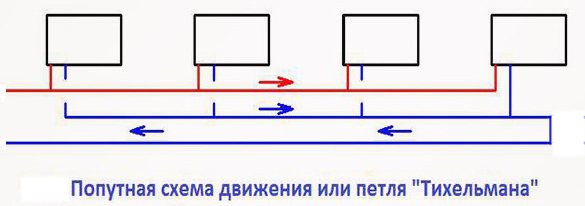

The movement of the coolant in the forward and reverse circuits occurs in the same direction. The return loop starts with the first radiator and the feed ends with the last one. The correct movement of the coolant is organized by selecting the diameter of the pipelines. Using the Tichelman loop, you can achieve uniform heating of the premises.
Double-pipe dead-end


It differs from the previous type in the multidirectional movement of the coolant in the forward and reverse circuits and consists of several branches (arms). The last heatsink in each branch is a dead end. The return circuit begins from this radiator.
A two-pipe dead-end heating system is more difficult to implement than a passing one. Careful calculation of the hydraulic component of the system is necessary. In addition, it is necessary to observe the equality of the load on each shoulder. It is recommended to equip each arm with no more than five heating devices.
The advantages of two-pipe systems are low selling price and reliability of operation (in comparison with one-pipe systems).
Among the shortcomings, one can single out - the need for a large number of heating pipe connections. This significantly reduces the reliability of the system, and is especially critical with hidden laying.
In addition, there is no possibility of individual adjustment of each heater separately, which often does not allow setting the required temperature in a particular room.
With two-pipe wiring, the lines can be laid, both open and hidden. In the first case, copper or polypropylene pipes are usually used, in the second - from cross-linked polyethylene. Cross-linked polyethylene is used due to the increased reliability of the pipe-to-fitting connection.
Radiator connection methods
The main task when choosing a heating scheme is to determine the correct option that optimally combines efficiency and financial costs.To do this, the developer has at his disposal various types of wiring, ways to turn on the batteries, the location of their inlet and outlet pipes, location relative to the boiler, accumulator or storage tank.
Single pipe
One-pipe connection of radiators is one of the cheapest methods of heating premises; for its implementation, heat is supplied sequentially to each of the heaters. From the outlet of the latter through the return, the working fluid enters the boiler and, after heating, is again sent to the heating radiators, making a circular cyclic movement.
The one-pipe system is widely used both in high-rise buildings and in individual construction for heating cottages and summer cottages. Its advantages include the minimum consumption of materials, a significant disadvantage is uneven heating - the liquid with the lowest temperature enters the radiator, the very last in the circuit.
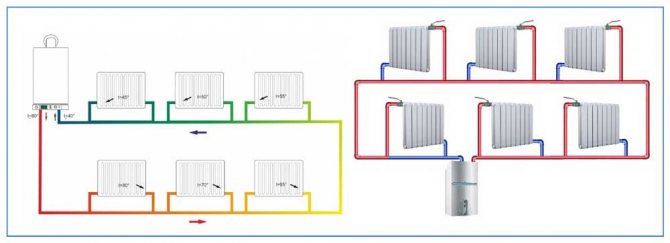

Fig. 2 Connection of radiators in a one-pipe system according to the Leningrad scheme
Various engineering solutions, which are used with equal efficiency in municipal and individual housing construction, help to solve the problem of uneven heating in one-pipe wiring. The correct connection of heating radiators with a one-pipe system consists in choosing one of two popular Leningrad schemes - with the connection of the outlets at the bottom or diagonally.
In Leningrad, a sequential connection of heating radiators is implemented in the following way: the pipeline runs at the bottom of the floor from the outlet to the inlet of the boiler, making a closed loop, and all heat exchangers are connected to it in parallel through the lower (upper) inlet and outlet fittings.
Connecting a radiator to a one-pipe heating system with a bypass is widely used in apartment buildings and private houses; for its implementation, input and output battery fittings are used on one side, and a vertical jumper of a small diameter is cut between the supply and return pipes (bypass in Fig. 9 on the left).


Fig. 3 Horizontal options for connecting heating batteries with a two-pipe system
Two-pipe
The use of two pipes helps to get rid of the main drawback that a single-pipe connection has - uneven heating of heat exchangers. In a two-pipe wiring, two pipelines are used: the first supplies the heat carrier to the heating devices, and the second works in the return line, transporting the cooled liquid to the boiler. Thus, the temperature of the latter in the two-pipe system of the heat exchanger practically does not differ from the parameters of the former. Two-pipe piping is not so often used in municipal housing construction, in individual construction it has several connection options, the main of which are dead-end and associated.
In the dead-end version, the radiator devices are switched on in series from the boiler with the supply and return pipelines, while the further the heater is located, the longer the path is for the heat carrier to reach it. The connection of the last battery in the circuit occurs along the longest path - this leads to the fact that the heat exchangers are heated unevenly with this inclusion.
One-pipe scheme ("Leningrad")
One-pipe heating distribution is an outdated scheme, but sometimes it is still used. It uses one pipe, forming an annular contour. Radiators are connected in series to this pipe. Through this pipe, the coolant is supplied to the radiators and through it it goes back to the boiler.
The only plus of "Leningrad" is its low price. A significant drawback is the different temperature of the coolant in the radiators. The radiators farthest from the boiler do not heat up sufficiently. For heating in private houses in today's realities, the Leningrad scheme is practically not used precisely because of this.
Heating pipe materials
When developing a system, depending on the method of laying pipes, their material is selected. This is due to its thermal expansion and flexibility.
For example, steel pipes can be installed both inside and outside. It is recommended to lay cross-linked polyethylene and metal-plastic in a hidden way. An open way of laying them is undesirable, since the aesthetics of the interior is disturbed due to significant sagging. It is advisable to lay polypropylene lines openly. Otherwise, possible leaks at the joints may not be detected in time.
Next, we will take a closer look at the main types of heating pipelines and list their main advantages and disadvantages.
Crosslinked polyethylene


Modern technologies for the manufacture of pipes from this material make it possible to achieve high consumer properties. The pipes produced by cross-linking methods are marked with PEX.
Leading manufacturers of XLPE pipes produce press fittings for them. They are crimped using a special tool. The resulting compounds are highly durable.
Benefits:
- Flexibility, tensile strength, the ability to return to its original state even with severe deformation
- Ability to withstand high pressure - up to 10-12 atmospheres
- Simple installation of heating, when using these pipes
- Resistant to high temperatures and aggressive environments
Disadvantages:
- UV Vulnerability
- The softness of the coating (this can lead to the fact that the walls of the pipes will be eaten by mice and rats). This is also why such pipes are used mainly in internal communications. It is recommended to lay them in the ground in metal shells.
- XLPE pipes and fittings are relatively expensive
- The high cost of a tool for joining a pipe to a fitting
Polypropylene


It is a lightweight material derived from petroleum products. Both the pipes themselves and the fittings are made from it. Pipes are connected to each other by soldering fittings.
Benefits:
- Low price
- Resistant to aggressive chemicals
- Ease of assembly
- Low price of tool for soldering connections
Disadvantages:
- Deterioration of properties due to exposure to sunlight
- Flammability
- Criticality to high (above 70 degrees C) coolant temperature
- Low durability
Installation of heating in a private house, using polypropylene pipes, is used with an open laying of an internal heating system.
Modern polypropylene pipes are reinforced in order to improve their consumer qualities and reliability. Reinforcement materials - fiberglass or aluminum. The best option for heating is fiberglass-reinforced polypropylene.
Metalloplast


The name of the material reflects its structure. It consists of layers of polyethylene, aluminum and an adhesive layer. Pipes made from this material are used with brass fittings.
Benefits:
- High strength
- Durability
- Resistant to high temperatures, sunlight and aggressive environments
- Flexibility
- Ease of mounting metal-plastic pipes
Disadvantages:
- Poor resistance to system pressure
- Relatively high cost
- Thermal deformation tendency
- Delamination when exceeding the maximum allowable pressure
- High cost and non-versatility of the tool for working with material
Heating in a private house with metal-plastic pipes is used mainly for internal laying.
Steel
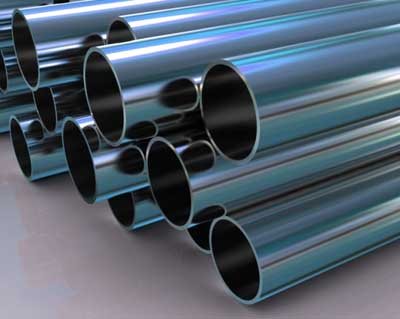

This material is traditionally used for the manufacture of heating pipes. Until recently, almost all pipes for space heating were made only from this material. The mains are connected by a welded method or by means of threaded fittings.
Benefits:
- High strength, resistance to mechanical stress
- Ability to withstand any temperature and pressure of the coolant
- Low price
- Low coefficient of thermal expansion
Disadvantages:
- Time-consuming and complex installation of heating in a private house on these pipes
- Lack of flexibility
- Corrosion susceptibility
- Internal "overgrowth"
- The service life (in comparison with modern materials) is relatively low - up to 15-20 years, depending on the operating conditions.
Copper


Heating systems built on copper pipes are rare. The reason is the high price of such pipelines.
Benefits:
- High strength, resistance to mechanical stress, high temperature and pressure
- Long service life
- No corrosion
- Aesthetics (with open padding)
Disadvantages:
- High material price
- Criticality to the presence of impurities in the coolant and to its composition
- Time-consuming heating installation in the house
- Negative galvanic processes when docking with some materials
It should be remembered that it is not permissible to install copper pipes in front of steel pipes and radiators. This leads to negative galvanic processes. To avoid this, it is necessary to lay copper pipes after the steel sections along the flow of the coolant or to make a galvanic gasket from a neutral material (for example, bronze, brass).
Stainless steel
Heating a house from stainless steel pipes is significantly more expensive, but they are devoid of one of the main drawbacks - susceptibility to corrosion. As a result, stainless steel pipes last much longer and can be used in almost any heating system. But their cost is very high and they are used in very rare cases.
Bellows pipes
They are corrugated stainless steel flexible hoses. They are not often used in heating systems. Sometimes they act as inlets to radiators or convectors, if the use of ordinary pipes for this purpose is difficult for some reason.
Plastic pipes for heating, pvc and flexible polymer pipes
No heating system can fully work without such an element as pipes. They are to the system - like veins and arteries to humans. That is why the choice of pipes that will later be used to create a heating system should be approached as carefully as possible. Recently, more and more often, plastic pipes are used for heating during installation. They can be of two types - polypropylene and metal-plastic. Of course, each plastic heating has its own advantages and disadvantages. Let's consider them in more detail.


Plastic pipes for heating
Reinforced-plastic pipes for heating systems
As the name implies, a metal-plastic pipe is one that is made not only of plastic, but also of their metal. That is, the inner and outer sides of the plastic pipe for heating are made of high-quality plastic, and between them there is a thin layer of aluminum. It is thanks to her that the pipe can withstand both high temperatures and the pressure that is present in the system. There are three types of metal-plastic pipes on the modern market: for cold water, for hot, and for heating. Reviews of such pipes are very different. Of course, they all differ in performance and cost. It can be pvc pipes for heating, pp pipes for heating and others.


Reinforced-plastic pipes
The "weak point" of metal-plastic pipes can be called the places of their connection. The fact is that the compilation of pipes is carried out using special threaded elements (fittings), which are supplemented with rubber gaskets that ensure tightness. But the problem is that constant exposure to high temperatures will significantly shorten the life of such gaskets.As a result - 2-3 years after installation and start of operation, such an elastic band should be changed. Otherwise, a leak may appear at the most inopportune moment. This makes it unacceptable to use this connection in those heating systems, flexible pipes for heating which are laid inside the walls.
The advantages of metal-plastic pipes include low cost, availability, flexibility. In addition, polymer pipes for heating are rather thin, which makes them extremely invisible in the interior.
Polypropylene pipes for heating systems
Recently, polypropylene pipes are used more and more often in heating systems. And it is not surprising, since the number of their advantages is much higher than the number of disadvantages. First of all, plastic pipes for heating are not connected using fittings with rubber gaskets - they are soldered using special equipment. This makes heating with plastic pipes more durable - the absence of rubber gaskets significantly reduces the likelihood of leakage.
Recommended reading:


Polypropylene pipes for heating
Another advantage of polypropylene pipes is their long (over 40 years) service life.
Well, in addition, fiberglass pipes for heating are quite affordable both in terms of their prevalence (that is, they can be bought in almost any building materials store) and at cost.
All these qualities make plastic heating in a private house the most demanded when installing heating systems. There are several types of pipes of this type on the market today. It:
- PN16 and PN25 - these two types are not used in heating systems, since they have a rather low permissible temperature limit. That is, with prolonged contact with a hot coolant, such a pipe may become unusable.
- Composite pipe. It is an ideal solution for heating systems as it can withstand both high temperature and pressure perfectly. The advantage of a composite pipe is that it is made of high quality polypropylene with a thin metal layer. That is, in fact, it is a metal-plastic pipe in which propylene is used.
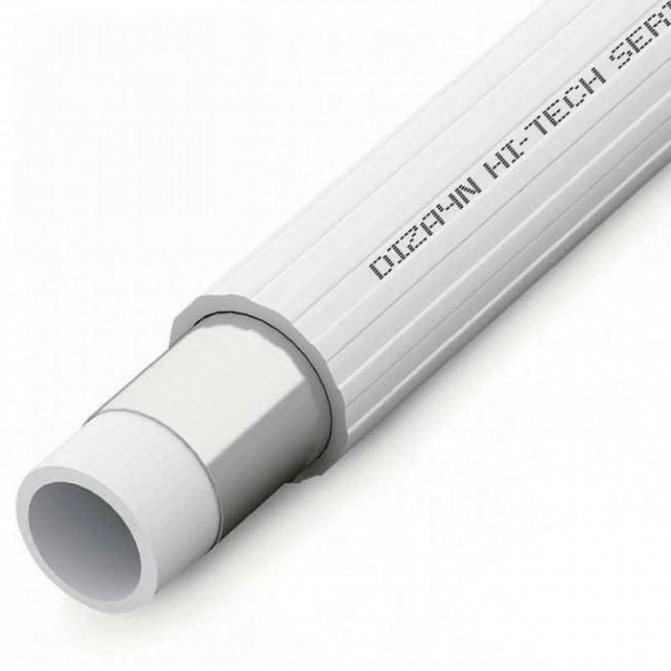

Composite polypropylene pipe
That is, a composite pipe differs from a conventional polypropylene pipe by the presence of a metal insert, from a metal-plastic one - by the fact that it is made of polypropylene. In fact, this is a kind of hybrid. At the same time, this type of pipe also perfectly withstands high temperatures. And the pressure - which makes them the most suitable for heating systems.
A composite pipe is often called stabilized and is divided into several types:
Recommended reading:
- deeply stabilized - that is, the interlayer, which makes the pipe extremely "hardy".
- with an outer layer - the metal is located quite close to the outer layer of the pipe.
There is a difference in such tubes, and it is quite large.
First of all, the metal layer in pipes with external stabilization is rather a disadvantage - after all, before soldering the pipe on the sections, the metal should be removed, since it only interferes with making the seam as tight as possible.
If the interlayer is not removed, then in the future the pipe may delaminate - and this leads to the urgent need to replace the damaged section. At the same time, the diameters of plastic pipes for heating with a deeply located stabilization layer do not have such a problem - they are easily soldered and do not swell (exfoliate) during operation.
Aluminum or fiberglass can be used as a stabilizing material. Of course, HPVC pipes for heating using the second type of material are more expensive.However, there is not much difference - after all, both materials do an excellent job with the functions assigned to them.
It should be noted that, despite the large number of positive qualities, plastic pipes for heating still have several disadvantages. First of all, no matter how high-quality they are (and whatever the manufacturer says), a slight deformation still appears during operation. In addition, polyurethane pipes for heating have a fairly high level of heat loss. However, a merylon cover will help to cope with this, which is often used if hidden installation of pipes of the heating system is carried out. It significantly reduces heat loss and contributes to less deformation.
Rate the publication:
otoplenie-doma.org
Heating devices
Various types of heating devices can be used for water heating in a house - radiators, convectors, registers, warm floors. We will describe in more detail about each of these devices below.
Radiators


The most common heating devices are radiators. They may differ in the number of sections (in addition, there are non-sectional radiators) and material. The larger the frontal surface area, the more heat the device generates.
Radiators are divided into the following types:
- Steel
- Panel
- Tubular
- Bimetallic sectional
- Aluminum sectional
- Cast iron
They can have the following connection type:
- Lower
- Lateral
- Diagonal
Convectors


In addition to radiators, home heating can be done with water convectors. Their principle of operation is based on the fact that heated air rises upward, displacing cold air. This phenomenon is called convection, hence the name of this device. As a rule, convectors are installed under windows. The warm air coming up from them creates a "curtain" that blocks the flow of cold air from outside.
By their location, convectors can be:
- Wall mounted
- Floor standing
- Embedded
Wall-mounted appliances are attached to the wall using special brackets. They have a small mass, therefore, unlike radiators, they can be installed even on plasterboard partitions.
Floor convectors are mounted on the floor using the legs supplied. They are small in size, but have high heat dissipation.
Built-in convectors are installed in a niche under the floor. The grill at the top of the appliance is flush with the floor. In some cases, this lattice is decorated to match the interior style.
By the type of convection, convectors can be divided into devices:
- Natural convection
- Forced convection
In the first case, streams of warm air flow upward, cold air flows downward due to the difference in density, where, in turn, they are heated by the converter. Further, this process occurs cyclically, in a natural way.
In models with forced convection, electric fans are built into the devices. Due to the operation of the fans, the convection process is accelerated, the heat transfer is increased.
Convectors, as a rule, look more aesthetically pleasing than radiators, and built-in ones are not visible at all (except for the grille). Therefore, they are often installed when design is of great importance. They are also used where traditional radiators cannot be used, for example:
- In front of the glass doors of the balconies
- With "low windows"
Convectors are often used not only for heating living quarters, but also in swimming pools and winter gardens.
Registers
Another type of heating devices are registers. They are welded or assembled structures made of metal (usually steel) pipes. The pipes are connected to each other by jumpers through which the coolant circulates.Cottages are rarely heated by registers due to their unattractive appearance. Registers are used most often at industrial facilities.
Heating the house with underfloor heating
In recent years, water-heated floors have been gaining popularity. If the room is large, radiators do not always effectively heat the entire space, especially in the center of the room. In this case, in addition to radiators, it is advisable to install underfloor heating. The heated air rising from them fills the entire space evenly.
Choosing a heating system scheme
Heating system diagrams are methods of laying heating pipes and connecting heating radiators to them. The setting (balancing) of the heating system, the flow rate and laying of heating pipes depend on the type of heating system scheme.
There are three basic schemes of the heating system: one-pipe (Leningrad), two-pipe and radial.


Fig. 2.


Fig. 3.


Fig. 4.
One-pipe heating system (Fig. 2.) is one pipe to which heating radiators are connected. The pipe is laid around the perimeter of the house and connected to the heating boiler. In this scheme, the pipe consumption is minimal. The disadvantage is that each subsequent heating radiator will heat worse than the previous one, and it is very difficult to evenly redistribute heat between them.
Two-pipe heating system (Fig. 3.) is a system of two pipes, one supply and the second return. Heating radiators are connected to the supply and return. It turns out that the radiators are connected in parallel and the heat distribution over them occurs evenly. This scheme is easy to adjust, therefore it is used most often.
Beam scheme (Fig. 4.) differs from the two-pipe independent connection of heating radiators. Distribution manifolds are used for this purpose. In this case, it becomes possible to individually adjust each heater, which has a positive effect on savings on heating. According to this scheme, a water heated floor is connected. The disadvantage is the high consumption of heating pipes.
Other components of the heating system
Heating a house, in addition to pipelines and heating devices, may include the following elements.
Circulation pump
The circulation pump is used in schemes with forced movement of the coolant. A circulation pump is installed on the return pipe between the boiler and the nearest radiator located along this pipe.
Its principle of operation is as follows. The pump motor is driven by a rotating rotor. The pump begins to take the coolant from the circuit on one side, and on the other to push it through the pipes.
Expansion tank
It is a steel tank with two chambers inside. These chambers are separated by a membrane. One of them is intended for filling with water, the second is an air expansion joint.
Expansion tanks are installed in closed-type heating systems to compensate for possible water shocks.
Buffer capacity
Its purpose is a supply of heated coolant and ensuring the operation of the heating system for a certain time with the heat source turned off.
Heating in a house with solid fuel functions optimally when using this container. During the day, when a solid fuel boiler is operating, the coolant is heated in a buffer tank. And at night, the cottage can be heated from this container with an inoperative boiler, while the coolant has not cooled down.
Tips for Connecting Batteries Diagonally
There are two main methods of heating houses - gravity and forced. In the gravity circuit, the hot coolant from the boiler independently rises up the riser pipe, at the end of which an open expansion tank is installed (it is usually placed in the attic of a private house).The gravity movement of water occurs due to the fact that the hot liquid has a lower density due to its expansion when heated, and therefore it is pushed up by the lower cold masses. Further, the heated water enters the radiators installed below the expansion tank, while all supply pipes must have a certain slope.
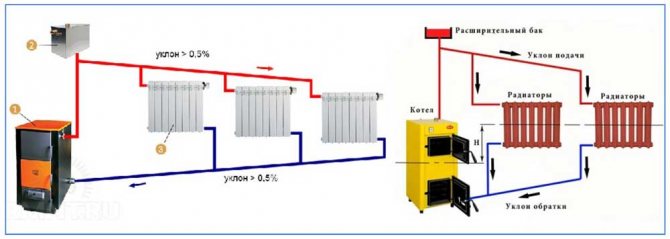

Fig. 7 Gravity two-pipe heating system - radiator connection diagram
Diagonal diagram in gravity systems
In self-contained (gravitational) circuits, it is theoretically possible to apply a series diagonal connection of batteries with an incoming flow through their upper branch pipe and outlet through the lower one on the other side. From the last radiator heater, water can be diverted at a slope to the boiler, which is usually located in the basement. A significant drawback of this arrangement is the different temperature of the radiators closest to the boiler and distant radiators, which cannot be equalized by thermostats due to the serial connection, therefore the number of batteries with such a wiring is limited.
This disadvantage is avoided by using a parallel two-pipe connection of the batteries to the supply and return pipes. With this connection, a separate pipe fits to each radiator on top of the expansion tank; similarly, separate pipes from each device are supplied to the boiler, connected in one unit. In this scheme, it is possible to make the temperature of each heat exchanger the same using thermostats or balancing with valves with valves that regulate the volume of the coolant flow through each device.
The main disadvantages of gravity circuits are the low height of buildings (no more than 2 floors), a small number of mounted heat exchangers due to limitations in the length of pipelines, and the impossibility of organizing warm floors.


Fig. 8 Heating with forced diagonal heating
Diagonal in forced systems
In forced systems, to move the coolant through the pipes, a circulating electric pump is connected (it is usually placed in the return line), which pushes the water flow with its impeller with blades. This allows you not to make slopes, you do not need to bring an open expansion tank of a large volume to the attic (a small closed hydroaccumulator is installed instead), poisonous antifreeze - ethylene glycol can be poured into the system. Since the diagonal connection is the best in terms of efficiency (heat transfer) of radiators, it is used quite often, although in terms of aesthetics of appearance it is inferior to other options.
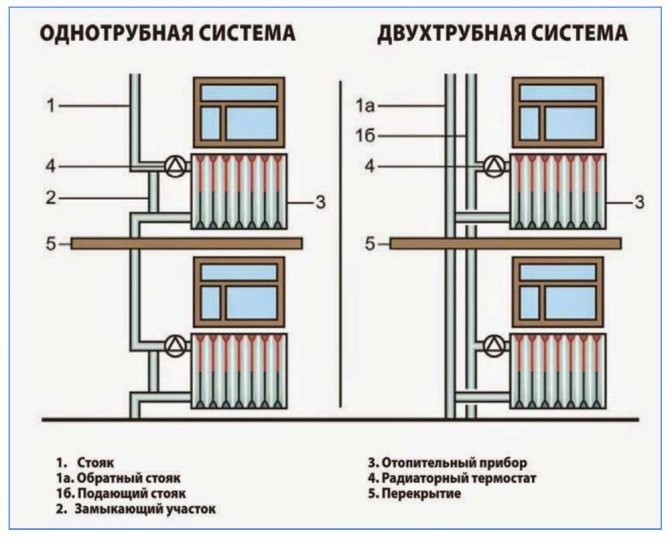

Fig. 9 Vertical wiring in multi-storey buildings
Heat carrier
The main types of heat carriers in heating systems are water, various antifreezes and their mixtures in certain proportions.
Antifreeze is a liquid that is an aqueous solution of ethylene glycol, propylene glycol or potassium acetate with the addition of modifying additives. They lower its freezing point.
Heating a house using a coolant, to which special inhibitors are added, prevents oxidation, corrosion, and scale formation. Their content can be from fractions of a percent to 3-4% by weight.
Which coolant to choose is decided individually, depending on the situation. If the probability of failure of the boiler is small, there are no problems with fuel, it is better to use water. Many boiler manufacturers prohibit the use of antifreeze agents; there are frequent cases of refusal of guarantees on this basis.
How is the replacement of the coolant in the heating system of different heating systems
Content:
Reasons for filling and resetting the system Starting heating in an apartment building How to start an open gravitational heating system Filling and starting a closed heating system Calculationcoolant volume Conclusion
When arranging the heating system and repairing it, sooner or later it becomes necessary to fill the circuit with a coolant. In addition, sometimes it is necessary to perform the reverse operation, i.e. drain the coolant. Different situations arise, and there are a number of factors, depending on which the filling of the system with water can be carried out in different ways. How to replace the coolant in the heating system will be discussed in this article.
Preparatory work
Before starting work on the installation of heating a private house, it is necessary to carry out preparatory work. Their goal is to reduce the possibility of downtime for the assembly team to a minimum during the production process. Preparatory work includes:
- Ensuring construction readiness - the heating circuit must be closed, the premises must be cleared of construction debris, there must be interfloor floors or logs
- Arrangement of niches for the installation of radiators and manifold cabinets - if necessary
- Preparation of the wall surface for the installation of radiators - preferably a fine finish
- Complete finishing of the boiler room
- Making all the necessary holes in the floors, making grooves and niches
Read other articles on this topic
| Water heating in a private house | Heating system installation: rules and description |
| Features of heating a country house with electricity | How to heat your home without gas |
| Heating a private house from metal-plastic pipes | Autonomous heating of a private house |
| Collector heating system of a private house | Private house heating project |
| The best heating for a private house | Heating and water supply of a country house: a description of the installation technology |
| Heating system of a private house with natural circulation | Heating wiring for a two-story house |
| How to save on heating a country house | Gas consumption for heating a private house - consumption calculation |
| Heating scheme for a two-story house | About heating schemes for a private house with a gas boiler |
| Installation of a heating system in a private house | Heating options for a frame house |
| Heating a private house with electricity | Heating a private house made of polypropylene with your own hands |
| Heating wiring diagrams from a boiler in a private house | Heating a house with liquefied gas |
Services on this subject
| Heating design | Turnkey solid fuel heating |
| Turnkey gas heating | Turnkey heating |
| Heating in a turnkey wooden house | Turnkey water heat-insulated floor |
| Installation of a water heated floor | Heating a two-story house |
| Heating installation in a cottage | Heating a country house: options and prices |
| Heating installation | Heating installation in a private house |
| Installation of engineering systems for water supply and heating | Diesel heating of a country house |
| Turnkey autonomous heating | Air heating of a country house |
| Prices for installation of heating in a private house | Design and installation of heating systems |
| Water heating in a private house | Electric heating of a country house: options and prices |
| Heating in a townhouse | Gas heating design |
| Heating design cost | Private house heating calculator |
| Installation of a water-heated floor in a private house | Price for installation of a water-heated floor |
| Installation of a water-heated floor on a wooden floor |
Radiator connection diagrams
Each standard radiator has 4 nozzles for connecting to the pipeline, the only exceptions are steel models with two lower outlets - this makes it possible to integrate them into any wiring diagram that is convenient for the consumer in terms of financial costs and design. In addition to diagonal, other methods of connecting radiator exchangers to pipelines are used.
Lower
Metal radiators with a special unit at the bottom (binoculars) and a corresponding internal structure can be connected to the heating system at the lowest point. Sometimes this switching method is also used in aluminum sectional batteries, but at the same time, water is additionally supplied to the upper branch pipe using a bypass jumper. In both cases considered, when connecting the heating system, the heating devices are connected from the bottom on one side, therefore, such an installation is called lower one-sided.
Also from below, a popular connection of radiators in a one-pipe system is made - a Leningrad one, which is realized by attaching downstream heat exchanger fittings to the main pipe. If you connect to the circuit from the bottom side, the heat transfer efficiency decreases to 88% for a Leningrad woman and another 10% with one-sided placement of pipes suitable from the bottom.
The main advantage of the lower units is the aesthetic appearance of the batteries without disturbing the design of the pipe sections when connecting under the floor screed.
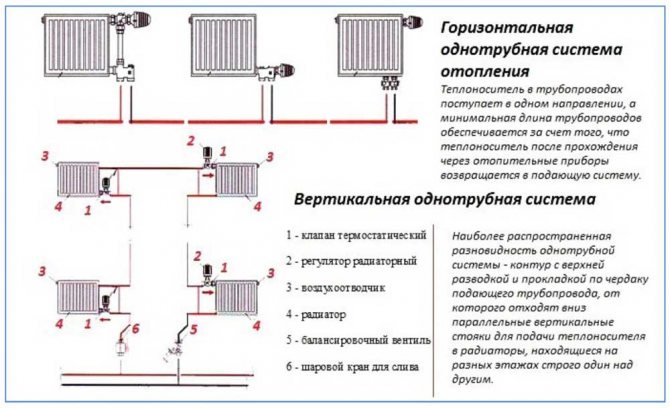

Fig. 6 Side and bottom connection of a heating radiator in a two-pipe system of private houses
